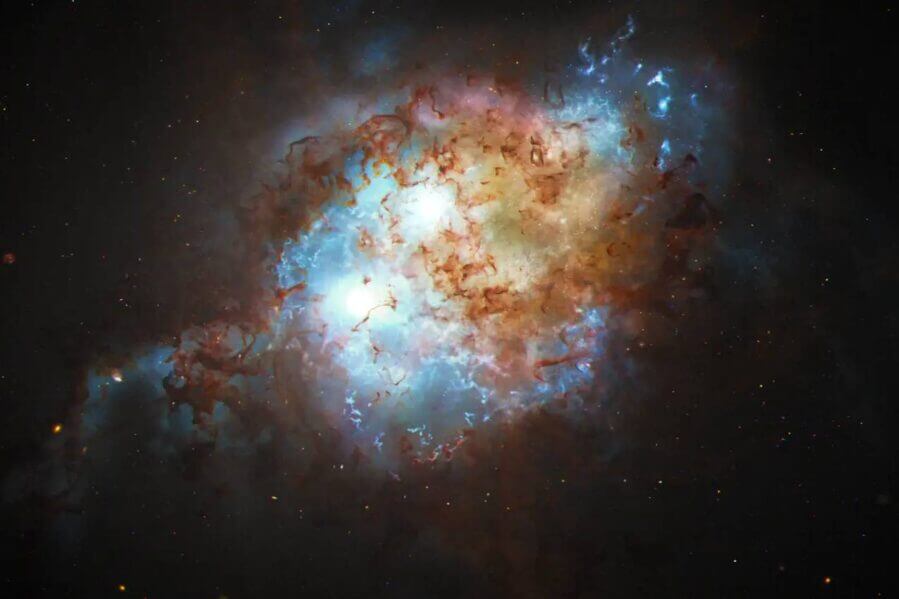Key Points
- Hubble Space Telescope discovered a pair of gravitationally bound quasars in merging galaxies from the early universe.
- Double quasars are rare and can provide insights into early black hole growth and galaxy assembly.
- Cosmological simulations help researchers understand the evolution of the universe and objects within it.
NASA’s Hubble Space Telescope has made a surprising discovery: a pair of quasars, bound together by gravity, inside two merging galaxies from when the universe was just 3 billion years old. An international team of researchers, including cosmologists from Carnegie Mellon University, reported the discovery in the April 5 issue of Nature.
Quasars are some of the brightest objects in the universe, created by invisible supermassive black holes at the centre of large galaxies. When black holes feed, they emit energy that heats up and illuminates the dust and gas they consume.
Thanks to powerful telescopes like Hubble, researchers can now see quasars from the early universe. Double quasars are rare but are thought to be a sign of galaxy mergers.
Tiziana Di Matteo, professor of physics and director of Carnegie Mellon’s McWilliams Center for Cosmology, said, “Understanding how black holes form, the first quasars emerge and how they grow along our cosmic histories is one of the greatest theoretical and observational challenges of modern astrophysics.”
The quasar pair discovered by Hubble comes from a time called “cosmic noon,” believed to be the peak of star formation and black hole growth. Astronomers think galaxies and black holes merged often during this time, but they’ve only seen a few double quasars.
Di Matteo said, “If we observe more double quasars, we can begin to put limits on theories about early black hole growth and galaxy assembly.”
Cosmological simulations are crucial for this research, and Di Matteo is a leader in the field. Her team uses computer programs to recreate conditions from the early universe and see how the universe and objects within it evolved over time.
Nianyi Chen, a doctoral student working with Di Matteo, said, “Observations give us only a single snapshot in time. In this case, we just see the double quasar at one point in its life and from one angle. And that picture is blurred by instrumentation and matter. From a simulation, we have access to much richer temporal and spatial information. In a way, it’s like reconstructing a 3D movie from a single picture.”
The Hubble team used simulations created by Di Matteo’s team to better understand what the telescope saw and its implications. Their simulation revealed valuable information about the quasar pairs, the supermassive black holes, and the galaxy systems they live in.
Chen said, “In our simulation, we can trace the double quasars through their entire lifetime and answer questions about how they were born, how they evolved, and what their future looks like.”
The simulation can predict whether the merger of the double quasars will produce gravitational waves, which could be detected by future instruments like the Laser Interferometer Space Antenna. Pairing the two will provide even richer data about the double quasars and the merger of their galaxies.

